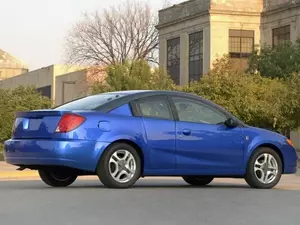
| Vehicle | Precise engine size | Difference from world average | Engine size to consumption ratio | Horsepower from 1 L | Engine size to 100 kg of weight |
|---|---|---|---|---|---|
| 2.2 i 16V Ecotec |
2.2 L (2198 cc) |
6.3% smaller | - | 64 hp from 1 L | 183 cc to 100 kg |
| 2.4 i 16V |
2.38 L (2384 cc) |
1.6% bigger | - | 73 hp from 1 L | 183 cc to 100 kg |
| Vehicle | 2.2 i 16V Ecotec |
|---|---|
| Precise engine size | 2.2 L (2198 cc) |
| Difference from world average | 6.3 smaller |
| Engine size to consumption ratio | - |
| Horsepower from 1 L | 64 hp from 1 L |
| Engine size to 100 kg of weight | 183 cc to 100 kg |
| Vehicle | 2.4 i 16V |
| Precise engine size | 2.38 L (2384 cc) |
| Difference from world average | 1.6 bigger |
| Engine size to consumption ratio | - |
| Horsepower from 1 L | 73 hp from 1 L |
| Engine size to 100 kg of weight | 183 cc to 100 kg |

| Vehicle | Precise engine size | Difference from world average | Engine size to consumption ratio | Horsepower from 1 L | Engine size to 100 kg of weight |
|---|---|---|---|---|---|
| 2.0 i 16V Red Line |
2 L (1998 cc) |
14.8% smaller | 69 cc to 1 mpg | 104 hp from 1 L | 143 cc to 100 kg |
| 2.2 i 16V Ecotec |
2.2 L (2198 cc) |
6.3% smaller | - | 64 hp from 1 L | 183 cc to 100 kg |
| Vehicle | 2.0 i 16V Red Line |
|---|---|
| Precise engine size | 2 L (1998 cc) |
| Difference from world average | 14.8 smaller |
| Engine size to consumption ratio | 69 cc to 1 mpg |
| Horsepower from 1 L | 104 hp from 1 L |
| Engine size to 100 kg of weight | 143 cc to 100 kg |
| Vehicle | 2.2 i 16V Ecotec |
| Precise engine size | 2.2 L (2198 cc) |
| Difference from world average | 6.3 smaller |
| Engine size to consumption ratio | - |
| Horsepower from 1 L | 64 hp from 1 L |
| Engine size to 100 kg of weight | 183 cc to 100 kg |